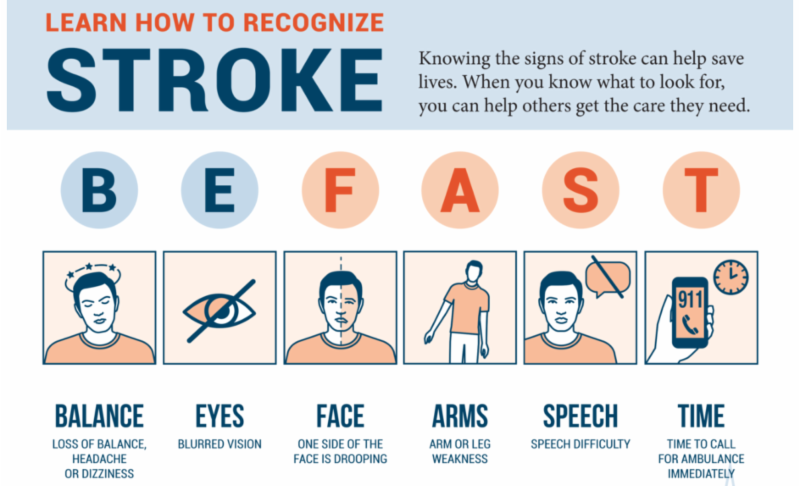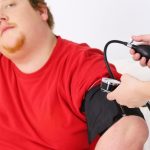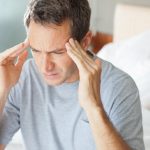The Warning Signs of Stroke in Women, they can be subtle!
Updated on April 02, 2024
Medically reviewed by Brigid Dwyer, MD
Strokes are the fifth leading cause of death in the United States and a leading cause of serious disability.1
During a stroke, blood flow to an area of the brain is blocked or a blood vessel bursts, causing bleeding in the brain. Women have a higher lifetime risk of stroke than men.
A stroke can cause serious physical and cognitive impairment (difficulty in the process of thinking and reasoning) due to brain damage that occurs when an area of the brain is deprived of blood flow. Symptoms can include difficulty speaking, paralysis on one side of the face or body, and confusion.
In addition to or instead of these common symptoms, some people have subtle symptoms—such as fatigue or nausea—that can be overlooked and untreated. Research suggests that subtle symptoms may be more common in women, but men or women can have subtle symptoms of a stroke. It’s important to recognize these subtle symptoms and get immediate help.
This article will discuss the signs of stroke in women and how to prevent a stroke. Knowing more could save your life or the life of a loved one.
The lifetime risk of stroke for women between the ages of 55 and 75 in the United States is 1 in 5.2 Stroke is the third leading cause of death in women, and Black women are more likely to die from a stroke than Hispanic or non-Hispanic White women in the United States.
A set of exercises for rehabilitation of post-stroke patients. Set No1 is aimed at improving the functions associated with mobility in bed.
For additional information about the rehabilitation after a stroke you can watch a video demonstrating exercises and rehabilitation recommendations.
Warning Signs of a Stroke
Typical stroke warning signs can develop and worsen quickly, so it’s recommended to get immediate medical attention if you or someone else has symptoms or signs of a stroke.
Symptoms include:3
- Difficulty speaking, communicating, or understanding others
- Difficulty moving the face, arm, or leg on one side of the body
- A decrease or change in sensation on one side of the body
- Vision changes
- A severe headache or dizziness
- Confusion, changes in alertness, or a seizure (uncontrolled, abnormal electrical activity in the brain that can cause stiffness, twitching, and limpness)
Call for emergency medical help if you experience or witness any of these symptoms.

Stroke Symptoms in Women
Sometimes the early signs of a stroke might not be obvious, or a stroke might not cause the usual effects. Uncommon symptoms can affect anyone at any age, but they may be more common in women. Described as atypical stroke symptoms, these less frequent symptoms can include fatigue, drowsiness, incontinence, pain, or generalized weakness.4
Most studies that examine the effects of stroke in women include people who were identified as female at birth.
Fatigue and Weakness
Sometimes a stroke can lead to generalized fatigue and overall weakness. This might not necessarily manifest as weakness on one side of the body.
Sudden tiredness and weakness can also occur due to certain physiologic shifts that may accompany a stroke, such as changes in blood pressure and blood sugar. Pain is an uncommon symptom of stroke, but it can occur.
Confusion and Difficulty Thinking Clearly
Brain damage usually interferes with a person’s ability to think clearly. Having trouble communicating can worsen confusion. A stroke can also cause increased pressure in the brain due to cerebral edema (brain swelling). This may lead to confusion and trouble with thinking.
Sometimes incontinence (unintended release of urine or stool) can occur along with confusion.
Nausea and Vomiting
Increased pressure in the brain or damage to specific brain centers often leads to sudden and sometimes uncontrollable nausea and vomiting. This is usually accompanied by a headache.
Atypical Stroke Signs
You can experience more than one atypical stroke symptom, and you can experience atypical stroke symptoms with or without typical stroke symptoms.
EXERCISES FOR REHABILITATION OF POST-STROKE PATIENTS. SET №2 IS AIMED AT IMPROVING THE MOBILITY AND STABILIZATION OF THE PELVIC COMPLEX
Causes and Risk Factors
The most common causes and risk factors of stroke are the same for people of any sex, and they include hypertension (high blood pressure), atherosclerosis (hardening of the arteries) in association with unhealthy cholesterol levels, uncontrolled diabetes, heart disease, carotid artery disease (buildup of plaque narrowing these arteries on both sides of the neck), and smoking.1

Women also have some additional risk factors that do not affect men:
Demographic Group
The risk of stroke in women is affected by underlying medical conditions, race, and ethnicity. For example, women who have sickle cell disease are at a high risk of blood clots, which can cause a stroke.
Black women have a higher incidence of sickle cell disease, hypertension, smoking, and obesity—all of which increase stroke risk.2 And Hispanic women are more likely to have diabetes, hypertension, and obesity.2
Pregnancy and Eclampsia
Eclampsia (an emergency that can occur at the time of delivery) may alter the mother’s blood pressure and blood clotting process. This increases the risk of strokes and other types of blood clots. Sometimes the hormonal changes of a normal pregnancy can also increase the risk of blood clots.5
Birth Control or Hormone Therapy
Hormone treatments, including contraceptives, hormone replacement therapy, and hormone therapy used for treating medical conditions (such as polycystic ovary syndrome, a condition in which women have high levels of androgens, which are considered male hormones), can increase the risk of stroke through multiple mechanisms, including influencing blood clotting.
Obesity and Hypertension
Obesity and hypertension are associated with each other and with metabolic syndrome (a host of conditions that occur together), which can precede diabetes. Each of these problems increases the risk of stroke, and treatment can help reduce the risk.
For some women, obesity can alter estrogen levels, potentially increasing stroke risk.
Migraine Headache With Aura
Migraines sometimes occur with or are preceded by an aura. Symptoms of an aura include:
- Speech changes
- Dizziness
- Ringing in the ears
- Vision changes (like seeing lights or zigzag lines)
Having migraines with aura can increase your risk of stroke. Women are more likely than men to experience migraine, with or without aura.
Lifestyle Factors
Some lifestyle factors have a profound effect on stroke risk. Smoking, heavy alcohol use, malnutrition, and severe stress can increase the risk of stroke. And using hormone therapy or hormone-based contraceptives along with smoking can compound the risk.
A SET OF EXERCISES FOR REHABILITATION OF POST-STROKE PATIENTS. SET №3 IS AIMED AT IMPROVING THE MOBILITY AND FUNCTION OF THE UPPER LIMB, STABILIZING THE SHOULDER GIRDLE
Treatment for Stroke
The immediate treatments for stroke aim to reduce brain damage. These treatments include stabilizing blood pressure and blood sugar, reducing excess edema (swelling), and maintaining fluid balance.
These treatments are tailored and adjusted based on a person’s condition, which is monitored closely in the hours and days immediately after stroke symptoms begin.
For a stroke that is associated with a blood clot visible on imaging scans, treatment can include medication to prevent the clot from getting larger and procedures that can dissolve or remove the clot.
Research suggests that some treatments may have different effects on women than they have on men. Women have worse outcomes after acute (sudden, severe) stroke than men if they do not receive thrombolytic medications, which dissolve blood clots.
Women may have more benefits from acute stroke treatment with tissue plasminogen activator (TPA), which is usually given through a vein, or with intra-arterial pro-urokinase, introducing a thrombolytic agent through an artery.5
If you have a stroke, your treatment will be tailored to your individual situation and involves assessment of your stroke effects, your diagnostic tests, and your underlying risk factors—whether you are a man or a woman.
A SET OF EXERCISES FOR REHABILITATION OF POST-STROKE PATIENTS. SET №4 IS AIMED AT IMPROVING THE MOBILITY AND FUNCTION OF THE LOWER LIMB, STABILIZING THE PELVIC GIRDLE
How Women Can Prevent Stroke
Stroke prevention is extremely important for anyone who has risk factors. This means maintaining optimal blood pressure and cholesterol levels and getting treatment for diabetes and heart disease. Additionally, smoking cessation is vital.
Research suggests that some preventative measures may be different for women than for men, including:
- Healthy women, especially those over the age of 65, can benefit from taking aspirin for stroke prevention, while the benefit is not the same for men. Consult your healthcare provider or neurologist for recommendations based upon your personal medical history.6
- Women who have moderate carotid artery stenosis (narrowing) without symptoms may not benefit from surgery to the same degree as men, and may also have a higher risk of stroke from severe or symptomatic carotid artery stenosis.6
- Endovascular treatment, which is a minimally invasive type of surgery to lower the risk of stroke, could have greater benefit in women than men.7
- The prevalence of atrial fibrillation (an irregular heart rhythm) is higher in men, but women have a higher risk of stroke and death due to atrial fibrillation, as well as worse outcomes after a stroke that’s caused by atrial fibrillation.4
In addition to these differences, target body mass index (BMI) and cholesterol levels are different for women and men. It is important to follow the specific guidelines for your age and sex when you are trying to reduce your stroke risk.
By Heidi Moawad, MD
Dr. Moawad is a neurologist and expert in brain health. She regularly writes and edits health content for medical books and publications

Demo version of GRS workouts for rehabilitation of post-stroke patients on YouTube
You can find more information about Stroke in our Blog.
Our website presents sets of exercises for the rehabilitation of post-stroke patients in the following four areas:
-
A SET OF EXERCISES FOR REHABILITATION OF POST-STROKE PATIENTS. SET №1 IS AIMED AT IMPROVING THE FUNCTIONS ASSOCIATED WITH MOBILITY IN BED
-
EXERCISES FOR REHABILITATION OF POST-STROKE PATIENTS. SET №2 IS AIMED AT IMPROVING THE MOBILITY AND STABILIZATION OF THE PELVIC COMPLEX
-
A SET OF EXERCISES FOR REHABILITATION OF POST-STROKE PATIENTS. SET №3 IS AIMED AT IMPROVING THE MOBILITY AND FUNCTION OF THE UPPER LIMB, STABILIZING THE SHOULDER GIRDLE
-
A SET OF EXERCISES FOR REHABILITATION OF POST-STROKE PATIENTS. SET №4 IS AIMED AT IMPROVING THE MOBILITY AND FUNCTION OF THE LOWER LIMB, STABILIZING THE PELVIC GIRDLE
You may also find useful information and sets of exercises in the section APHASIA AND DYSARTHRIA, where 5 sets of exercises for rehabilitation for speech disorders are currently presented.
Summary
Stroke is a serious health condition that has life-altering consequences, with potential disability and death. A stroke can occur at any age, and the lifetime risk of stroke is higher for women than it is for men.5
Women need to be aware of common stroke risk factors, as well as additional risk factors such as hormone therapies and pregnancy. Women also need to get urgent medical attention for typical stroke symptoms, and to be aware of atypical stroke symptoms, which can include fatigue, difficulty thinking clearly, and nausea or vomiting.
Follow your gut instincts and get medical attention if you develop symptoms that make you feel like you are not yourself or that you are not in control of your body. Getting help and attention as soon as possible will help you get a speedier diagnosis, prompt treatment, and a better overall outcome.
FREQUENTLY ASKED QUESTIONS
1.What are the first signs of a stroke in a woman?
Usually, when a woman has a stroke, the first signs are the same as the signs that most men experience from a stroke—difficulty speaking or communicating, weakness on one side of the face or body, vision changes, or changes in consciousness. It’s more common for women than for men to experience atypical signs of stroke such as incontinence, fatigue, or confusion.7
2. What does a ministroke feel like for a woman?
A ministroke, or transient ischemic attack (TIA), can feel like temporary lack of muscle control, speech difficulty, or vision changes. Symptoms begin quickly due to insufficient blood supply to a region in the brain. The symptoms resolve within a few minutes, when blood flow is naturally restored before brain damage occurs.
3. If stroke symptoms go away quickly, should you still go to the hospital?
Yes, you should seek emergency medical attention for stroke symptoms, even if they go away quickly. A TIA is a warning sign of stroke risk, and you can have a stroke within hours or days of a TIA. Identifying and getting treatment for your risk factors, especially high blood pressure and heart problems, can reduce your risk of stroke.
Sources
https://www.verywellhealth.com/stroke-symptoms-in-women-5214356
- American Heart Association. 2021 heart disease and stroke statistics update fact sheet.
- Centers for Disease Control and Prevention. Women and stroke.
- Centers for Disease Control and Prevention. Stroke signs and symptoms.
- Bushnell CD, Chaturvedi S, Gage KR, et. al. Sex differences in stroke: Challenges and opportunities. J Cereb Blood Flow Metab. 2018;38(12):2179-2191. doi:10.1177/0271678X18793324
- Christensen H, Bentsen L, Christensen L. Update on specificities of stroke in women. Presse Med. 2016;45(12 Pt 2):e409-e418. doi:10.1016/j.lpm.2016.10.005
- Sjölander M, Eriksson M, Glader EL. Few sex differences in the use of drugs for secondary prevention after stroke: a nationwide observational study. Pharmacoepidemiol Drug Saf. 2012;21(9):911-9. doi:10.1002/pds.2268
- Kapral MK, Bushnell C. Stroke in women. Stroke. 2021;52(2):726-728. doi:10.1161/STROKEAHA.120.033233









